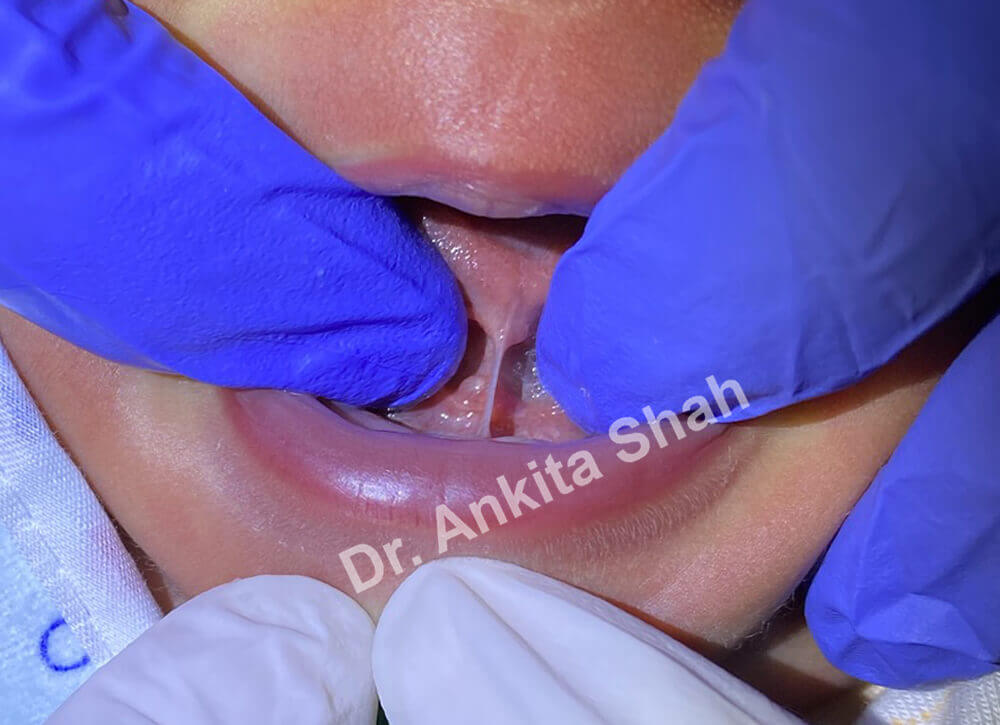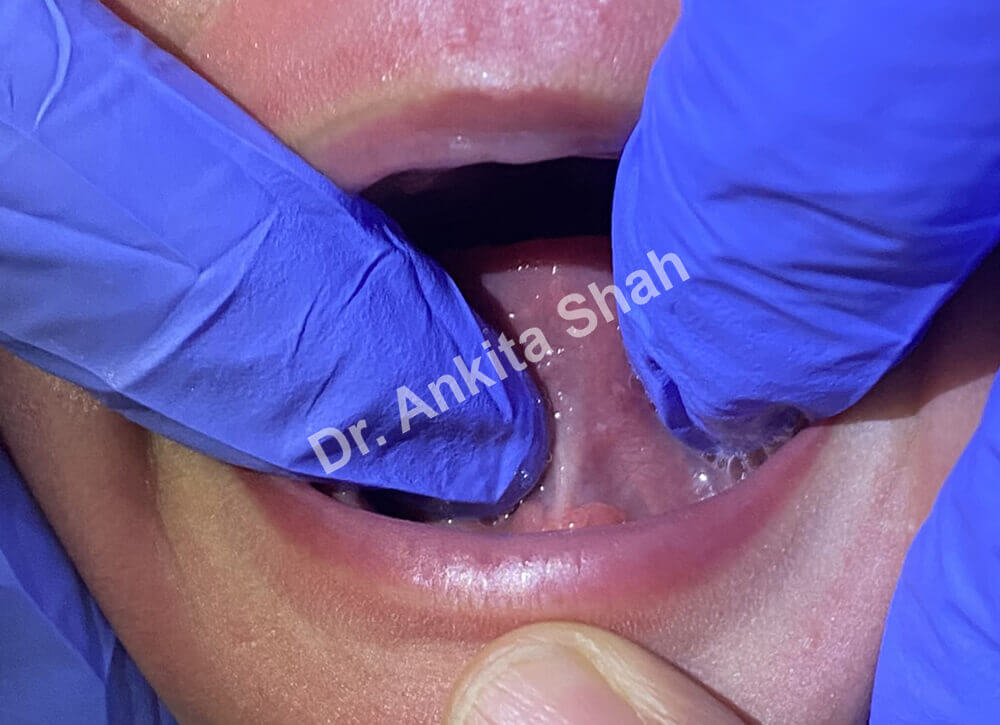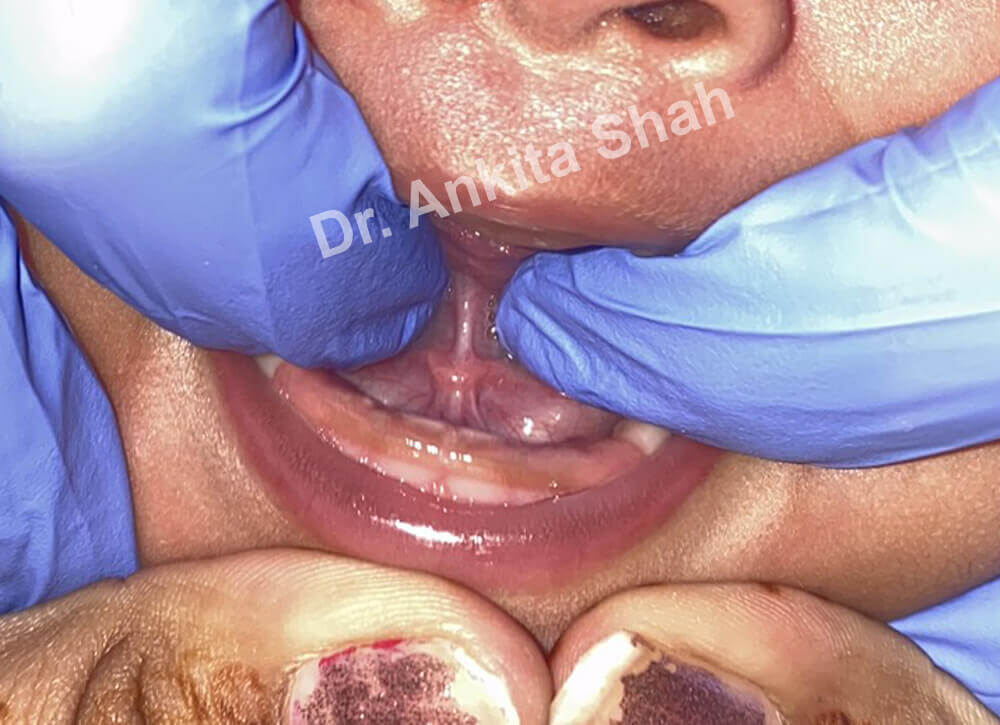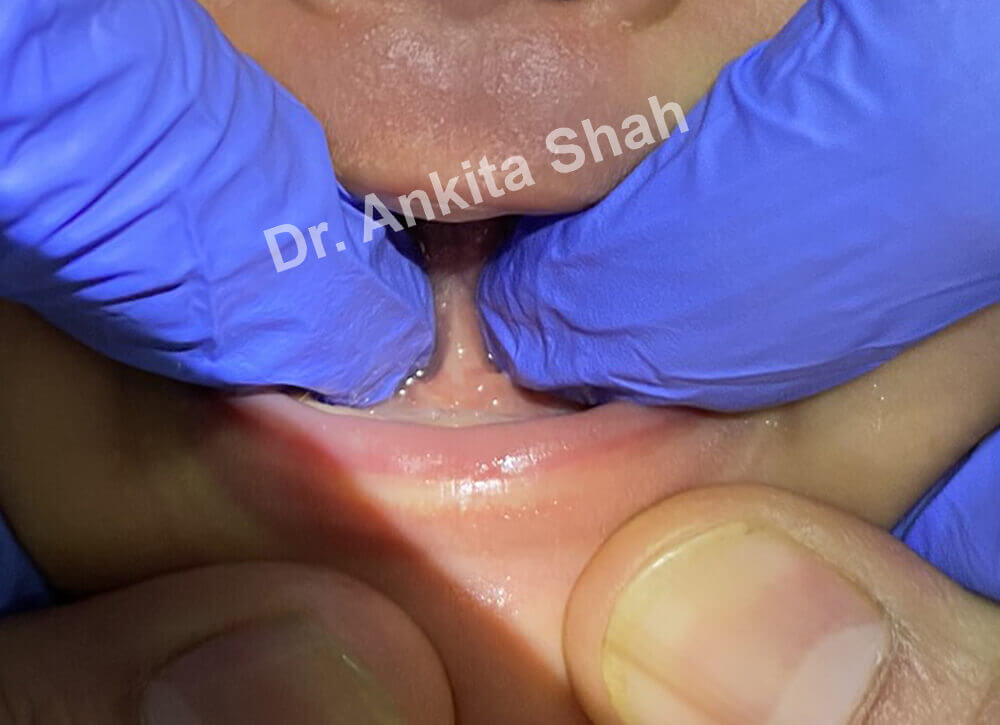

Tongue-tie (ankyloglossia) is a condition present at birth. It is a string of tissue that restricts the tongue’s range of motion. This tissue is known as the frenulum. The floor of the mouth is connected to the underside of the tongue, and the frenulum can limit various tongue movements that are essential for breastfeeding, sucking, swallowing, eating, drinking, chewing, breathing, speech, jaw growth, posture, and digestion.
Concerned about tongue-tie in your child? Get a reliable diagnosis from our experts.
To rule out lactation concerns, breastfeeding mothers should visit a paediatric dentist, lactation consultant, or paediatrician.
The following are some of the tongue tied symptoms in babies:
The Lactation Consultant working for your baby gives me background knowledge on your sessions with her. This helps me gauge the baby’s nursing progress before my initial consultation.




The following are the complications faced if tongue tie is not treated.
Depending on the severity of the tongue tie condition, a tongue tie specialist will advise on the probable treatment.
While the procedure can be performed with a laser or scissor, benefits of revising infant tongue tie with a laser include:
There is a healing period your infant will undergo after the procedure until the full benefits are realised.
The tongue now has more opportunities to move, but this does not take place automatically. The resting tongue can relapse to its old position and may ‘reattach’ during the healing process if post-surgery tongue tie exercises are not performed diligently.
Concerned about tongue-tie in your child? Get a reliable diagnosis from our experts.
While it may be tempting to attempt infant tongue tie examination on your own, I highly recommend that you allow a trained professional to perform it. Why? Experience is necessary to determine what level of tension warrants a lingual frenectomy and what does not. Diagnosis of a tongue tie is not simply based upon appearance – it is largely based upon symptoms experienced by mom and baby as well as tongue function.
Copyright ©2024 TMJ, Tongue Tie and Sleep Institute. All Rights Reserved.
WhatsApp us
Let Us Know How Can We Help You!